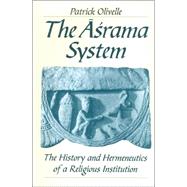The lesser known and explored of the two pillars of Hinduism, varna and asrama, asrama is a system of four distinct and legitimate ways of leading a religious life: as a celibate student, a married householder, a forest hermit, and a world renouncer. In this, the first full-length study of the asrama system, the author uncovers its origin and traces its subsequent history.
He examines in depth its relationship to other institutional and doctrinal aspects of the Brahmanical world and its position within Brahmanical theology, and assesses its significance within the history of Indian religion. Throughout, the author argues that the asrama system is primarily a theological construct and that the system and its history should be carefully distinguished from the socio-religious institutions comprehended by the system and from their respective histories.
The author pays special attention to how the system was theologically reappropriated in diverse ways at different historical periods through the hermeneutic labors of exegetes and theologians. This book thus represents a major study not only of Hindu religious history, but also of the tradition of Indian hermeneutics. In 1994 this book was the winner of the American Academy of Religion's Award for Excellence in the Study of Religion in the Historical category.








